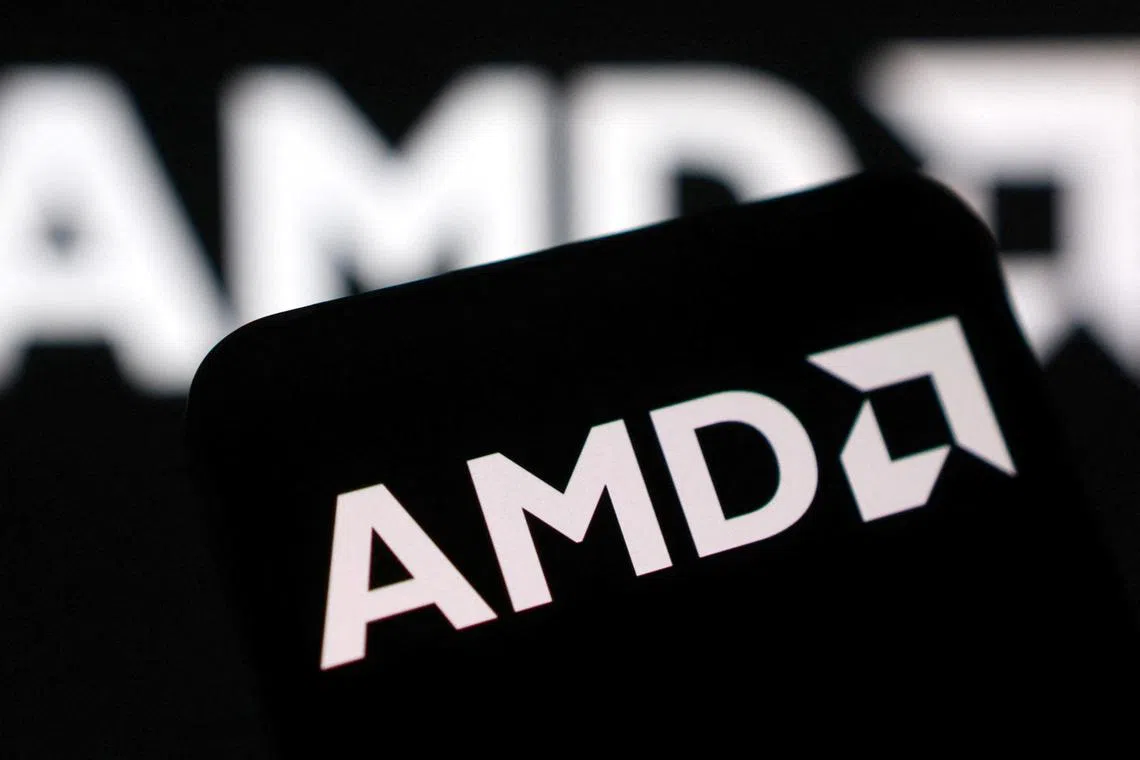AMD’s China concerns overshadow upbeat sales forecast for AI
Sign up now: Get ST's newsletters delivered to your inbox

AMD is the second-biggest provider of graphics chips, which form the basis for the AI accelerators that run in data centres.
PHOTO: REUTERS
Follow topic:
SAN FRANCISCO – Advanced Micro Devices (AMD), the second-largest maker of artificial intelligence (AI) processors, warned that its return to the crucial China market remains a work in progress, overshadowing a generally upbeat forecast for its AI business.
As part of its quarterly earnings report on Aug 5, AMD declined to predict Chinese sales of its Instinct MI308 – an AI processor it designed for the country.
US President Donald Trump’s administration had barred shipments of such chips to China in April, though it reversed course in July, raising hopes that AMD and rival Nvidia could soon resume sales.
China is the largest market for semiconductors, and the restrictions have threatened to erase billions of dollars in total revenue from both companies.
“As our licences are still under review, we are not including any MI308 revenue in our third-quarter guidance,” chief executive Lisa Su said on a conference call with analysts.
Three months ago, AMD said it was taking US$800 million (S$1.03 billion) in write-downs related to the export restrictions, and warned that the curbs would cost it US$1.5 billion in revenue in 2025. Wall Street has been waiting for a revised outlook in the light of the shifting policy.
Ms Su was optimistic about the overall market for AI computing.
“Looking ahead, we see a clear path to scaling our AI business to tens of billions of dollars in annual revenue,” she said during the call. The company is also ramping up its new MI350 line-up.
AMD shares initially fell more than 5 per cent in extended trading on the China concern, before paring the losses during the conference call. They gained 44 per cent in 2025 through the close, making AMD the best-performing stock in the semiconductor industry.
Third-quarter sales will be about US$8.7 billion, the company said, topping the average analyst estimate of US$8.37 billion.
AMD’s second-quarter sales rose 32 per cent to US$7.7 billion, compared with a US$7.43 billion average estimate. Profit was 48 US cents a share, minus certain items. Analysts projected 49 US cents.
Data centre sales gained 14 per cent to US$3.2 billion in the period. On average, analysts had predicted US$3.25 billion. Personal computer-related sales climbed 67 per cent to US$2.5 billion. The average prediction was US$2.56 billion.
In the decade since Ms Su took the top job at AMD, the company has become a key provider of technology across the computing industry. The ability to deliver competitive products – at a time when long-time nemesis Intel has stumbled – has brought a reversal of fortunes.
AMD’s market capitalisation is now roughly US$200 billion higher than Intel’s. Still, neither company has matched the runaway success of Nvidia, whose dominance of AI accelerators has made it the world’s most valuable business.
AMD is the second-biggest provider of graphics chips, which form the basis for the AI accelerators that run in data centres. Its microprocessors, meanwhile, go head-to-head with Intel products in the markets for PCs and servers. BLOOMBERG

